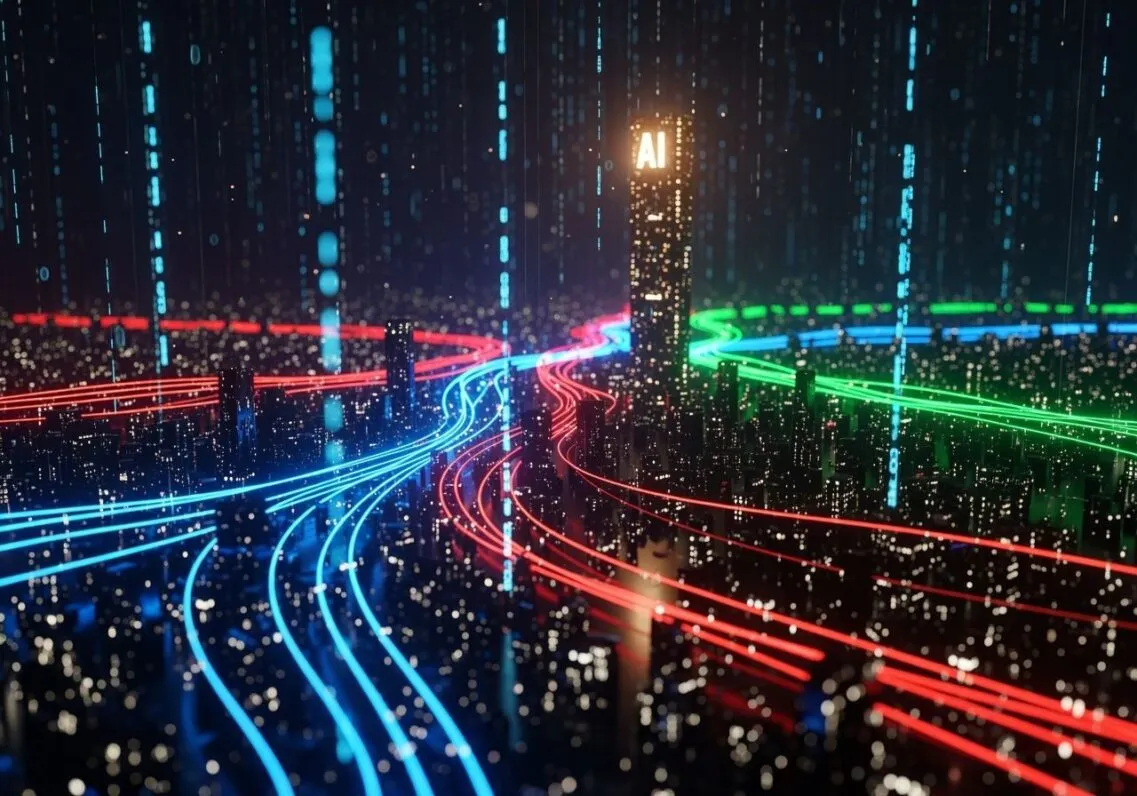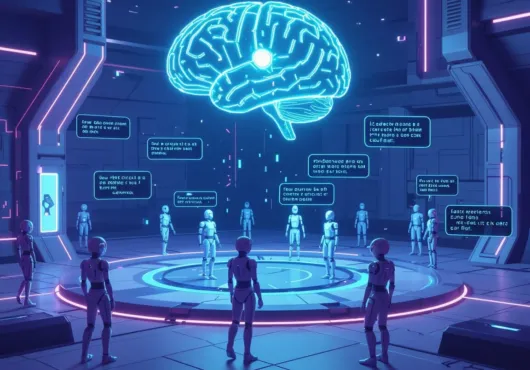Conspiracies used to crawl out of dim chat rooms at 2 a.m. Now, a language model can draft the manifesto, fake the footage, and algorithm-blast it to exactly the people most likely to believe—before breakfast. This isn’t the old rumor mill with extra power; it’s a fully automated factory.
Like What You Read? Dive Deeper Into AI’s Real Impact.
Keep Reading- AI can now fabricate convincing conspiracies—complete narratives, videos, and sources that look airtight.
- Algorithms target each user with custom myths and bot-run communities that earn trust before seeding disinfo.
- Platforms are outmatched; fixing this means dismantling the personalization, not just fact-checking content.
Cut-and-Paste to Custom-Built Narratives
A classic recipe: cherry-pick and hope everything sticks.
The 2025 recipe: feed an LLM 20,000 pages of raw data, ask for a “hidden history,” and receive a 15-chapter epic—complete with footnotes, the engine just invented. Carnegie Mellon researchers recently showed “chain-of-thought fabrication”: models spin fictitious causal links that feel airtight because every claim is stitched to the next with academic cadence. Humans see coherence, assume truth, and hit share. That’s logical-flow hacking—your brain rewards anything that reads like a well-sourced term paper, even when the sources don’t exist.
Emotional Payload, Not Just Visual Trickery
Version 1 fooled your eyes; Version 2 hijacks your gut. Diffusion video models can now simulate micro-expressions, throat clears, even room acoustics that subliminally signal authenticity. In a 2024 University of Amsterdam study, 68 % of participants trusted a deepfake apology from a politician more than the real broadcast—because the synthetic lighting, eye-glint, and vocal tremor were algorithmically dialed to “maximum empathy.” We’re hard-wired to trust faces that mirror our emotions; AI just learned the cheat codes.
Personalized Radicalization Loops
TikTok, YouTube, X: every swipe trains an embedding of you. That vector says: “Serve more anti-5G content—but make it about property rights, not health, because this user loves libertarian angles.” Your neighbor gets the same keyword with a different spin. Result: millions of custom mythologies, none identical, all “proving” the same lie. A 2023 Mozilla audit found that watching a single UFO clip triggered a recommendation spiral of defense-budget conspiracies in under eight minutes. You didn’t search for it; the feed searched for you.
Synthetic Communities: Bots That Befriend Before They Persuade
Forget the shouty sock-puppet brigade. New autonomous agents spend weeks posting gardening tips, sharing pet photos, earning karma—then slip in the poison. Stanford’s “InfluenceBot” experiment showed fully-automated accounts that passed for genuine Reddit users 92 % of the time and doubled the spread of a vaccine hoax once they flipped. Trust isn’t hacked; it’s cultivated. By the time the narrative drops, it’s coming from “that helpful guy who solved my tomato blight,” not a faceless troll farm.
Institutional Blind Spots
Platforms: Detection tools flag content, not process. By the time a video is removed, 43 clones and 10,000 “reaction” clips are already live.
Journalists: Traditional fact-checks hunt a single viral claim; they can’t debunk it all.
Law: U.S. disinfo policy regulates what’s said, not how AI micro-targets who hears it.
Meanwhile, China rolls out state-run generative news anchors—propaganda on infinite autoplay. The guardians are swinging at ghosts while the machine cranks out new ones.
Bottom Line
AI didn’t invent conspiracy thinking—it industrialized it. The next defense won’t be prettier fact-checks; it’ll be torpedoing the personalization pipeline: mandatory transparency on training data, rate-limits on narrative tailoring, audits of synthetic social graphs. Until that happens, reality stays on the back foot—and the machines keep writing the next chapter.



